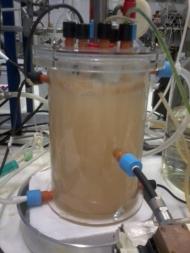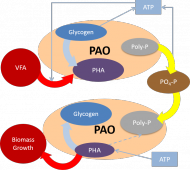Biological Nutrient Removal (BNR) and Recovery
Nutrients such as phosphorus and nitrogen are common causes of eutrophication in natural water bodies when present in high concentrations, leading to the growth of toxic Cyanobacteria (blue-green algae) with adverse effects on plant and animal life.
BIOENG focusses on biological nitrogen and phosphorus removal processes in wastewater treatment systems, and optimising the performance of these systems;

|
 |
|
 |
Nutrient recovery is of increasing importance due to the rapid depletion of phosphorus reserves worldwide;
BIOENG is investigating:
- new links between BNR and nutrient recovery with alternative process configurations in order to maximise our ability to re-utilise valuable resource.
